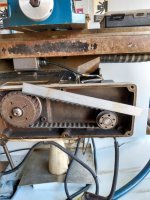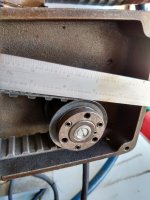johansen
Stainless
- Joined
- Aug 16, 2014
- Location
- silverdale wa
rotary encoders are produced in a variety of ways but many are an etching process using a master. the substrate can be plastic or glass.
a company i work for buys a custom reticle and its chrome plate on glass about 1/16" thick. about $60 each, about 1"diameter. a new master is like 2000$. can get anything you want, complexity is of not much additional cost because the cost of making the master is just the human labor of verifying what is produced is what the drawing shows. we send the reticles back that actually have defects and they give us new ones in exchange, and i personally inspect the every single one. they are almost always perfect, with the occasional pinhole. less than 5% of the time the chrome is not removed where it should be removed, and a rotary encoder this wouldn't matter if its not in the path of a detector.
there is no such thing as being off by a few counts without also a complete loss of tracking. (because two light sources and two receivers are used in quadrature and a missing line, or an extra one in the wrong place would totally screw up your system.)
a company i work for buys a custom reticle and its chrome plate on glass about 1/16" thick. about $60 each, about 1"diameter. a new master is like 2000$. can get anything you want, complexity is of not much additional cost because the cost of making the master is just the human labor of verifying what is produced is what the drawing shows. we send the reticles back that actually have defects and they give us new ones in exchange, and i personally inspect the every single one. they are almost always perfect, with the occasional pinhole. less than 5% of the time the chrome is not removed where it should be removed, and a rotary encoder this wouldn't matter if its not in the path of a detector.
there is no such thing as being off by a few counts without also a complete loss of tracking. (because two light sources and two receivers are used in quadrature and a missing line, or an extra one in the wrong place would totally screw up your system.)




